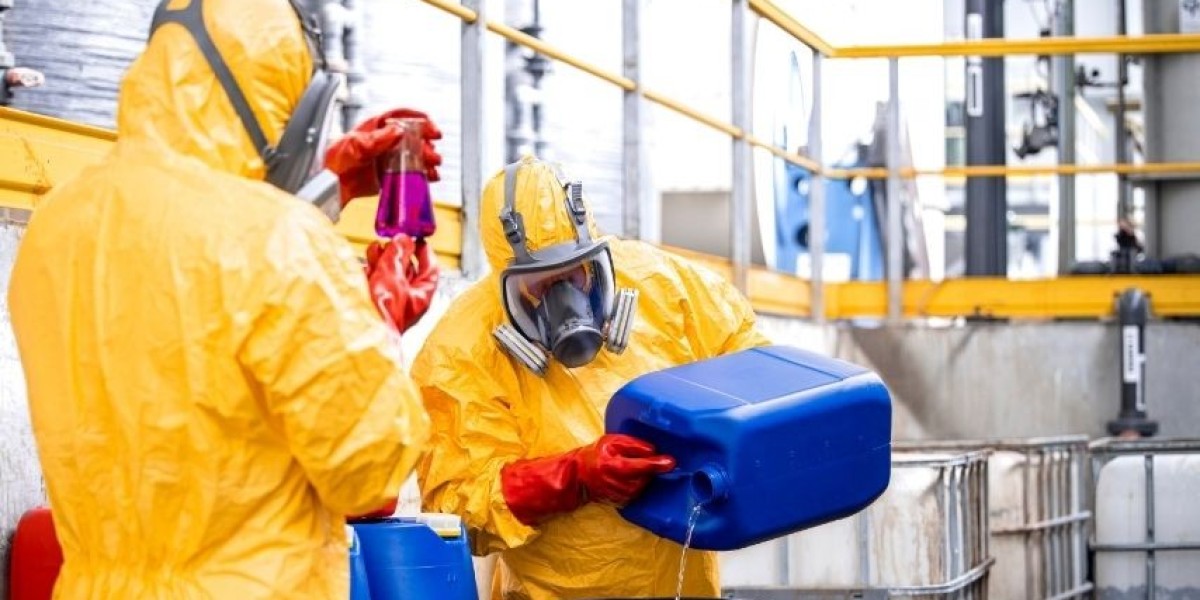What's the key to effective hazard management in Malaysia's industrial sector? The answer lies in understanding two crucial methodologies—HAZID and HAZOP.
HAZID (Hazard Identification) is a broad, proactive approach for identifying potential hazards early in design or operational phases, while HAZOP (Hazard and Operability Study) focuses on detailed analysis of operational deviations in specific system components.
Whether you're a safety professional or industry leader in Malaysia, understanding these distinctions is crucial for implementing effective risk management strategies.
Let's explore how these methodologies work together to create safer industrial environments and prevent potential hazards before they occur.
Fundamentals of HAZID Studies
Core Objectives and Implementation
HAZID study, also known as Hazard Identification, is a systematic approach to identifying and assessing potential hazards in industrial processes. This methodology is particularly crucial during the early stages of a project when major design decisions can still be influenced cost-effectively.
The primary objective of HAZID is to proactively identify safety, health, and environmental risks before they materialize into incidents. It serves as a foundational risk assessment tool that helps organizations develop robust safety protocols and mitigation strategies.
Implementation typically follows a structured process where teams examine each system component methodically. This systematic approach ensures no potential hazard goes unnoticed, from operational risks to environmental impacts.
Team Requirements and Expertise
A successful HAZID study relies heavily on the expertise and diversity of its team members. The team should include professionals from various disciplines, including:
- Process engineers
- Safety specialists
- Operations personnel
- Maintenance experts
- Environmental specialists
Each team member brings unique insights and perspectives, enabling comprehensive hazard identification across different aspects of the project. The team leader should have extensive experience in facilitating risk assessment sessions and managing group dynamics.
The expertise required extends beyond technical knowledge. Team members must possess strong analytical skills and the ability to think critically about potential scenarios that could lead to hazardous situations. This combination of technical expertise and analytical thinking ensures thorough risk assessment and effective hazard identification.
HAZOP Study Methodology
Process Analysis Framework
HAZOP study methodology employs a systematic approach to analyze complex workplace operations and identify potential hazards. The framework begins with a detailed examination of process parameters, including temperature, pressure, flow rates, and chemical compositions. This structured analysis helps teams methodically evaluate each component of the system.
During a HAZOP analysis, teams use specific guidewords like "more," "less," "no," or "reverse" to explore potential deviations from normal operating conditions. These deviations are systematically assessed to understand their causes, consequences, and existing safeguards. This methodical approach ensures no critical safety aspects are overlooked.
Documentation and Reporting
The documentation phase of a HAZOP study is crucial for maintaining a comprehensive record of findings and recommendations. Teams must document all identified deviations, their potential causes, consequences, and proposed safeguards in a standardized format. This detailed documentation serves as a valuable reference for future safety improvements and compliance requirements.
The reporting structure typically includes:
- Detailed process descriptions
- Team composition and roles
- Identified hazards and deviations
- Risk assessment findings
- Recommended control measures
- Action items and responsibilities
The final HAZOP study report becomes a living document that guides operational safety decisions and helps track the implementation of recommended safety measures. Regular reviews and updates ensure the document remains relevant and effective in managing process safety risks.
Learn the critical distinctions between these two methodologies in this detailed HAZOP vs HAZID comparison.
Project Lifecycle Integration
Timing and Implementation Phases
The integration of HAZID and HAZOP studies across different project phases plays a crucial role in ensuring comprehensive safety management. During the feasibility study phase, HAZID serves as an initial screening tool to identify potential hazards that could impact project viability.
As the project progresses into process design, HAZID continues to provide valuable insights while HAZOP studies become increasingly relevant. HAZOP's detailed analysis of process parameters becomes particularly important during the detailed engineering stage, where specific operational procedures are developed.
The operational phase of a project benefits from both methodologies. While HAZID helps maintain broad hazard awareness, HAZOP ensures operational deviations are thoroughly analyzed and controlled. This dual approach during operations helps maintain robust safety standards throughout the facility's lifecycle.
During project design modifications or upgrades, both studies can be revisited to ensure safety measures remain effective. This iterative approach helps maintain safety standards while adapting to changing operational conditions.
Risk Assessment Approaches
Hazard Identification Methods
Risk assessment methodology plays a crucial role in both HAZID and HAZOP studies, though their approaches differ significantly. HAZID employs a broader, systematic approach to identify potential risk across an entire facility or process. It uses brainstorming sessions and checklists to capture a wide range of hazards that could impact operations.
The process involves examining historical incidents, industry best practices, and regulatory requirements to ensure comprehensive coverage. Teams evaluate each identified hazard based on severity and likelihood, creating a prioritized list for action.
Risk Mitigation Strategies
Once hazards are identified, both methodologies implement specific safety measure strategies, but with different focuses. HAZID typically recommends high-level control measures that can be implemented early in the project lifecycle. These might include design modifications, engineering controls, or procedural changes.
HAZOP, however, takes a more detailed approach to risk mitigation. It examines specific process parameters and their deviations, leading to targeted safety recommendations. This method ensures that each potential deviation has appropriate safeguards in place.
Both approaches emphasize the importance of hierarchy of controls, starting with elimination of hazards where possible, followed by engineering controls, administrative controls, and personal protective equipment as a last resort.
The effectiveness of these strategies relies heavily on proper documentation, regular review, and updates to ensure they remain relevant and effective as operational conditions change.
Industry Applications and Standards
Sector-Specific Implementation
In Malaysia's industrial landscape, HAZID and HAZOP methodologies find extensive applications across various sectors, each adapting these safety protocols to their unique operational needs. The chemical manufacturing company sector, in particular, relies heavily on both methodologies to ensure comprehensive risk management.
Process industries implement these methodologies following strict industry standard guidelines. For instance, storage tank facilities must undergo regular HAZID assessments to identify potential hazards related to material storage, while HAZOP studies focus on operational deviations that could lead to accidents.
The oil and gas sector in Malaysia has integrated these methodologies into their standard operating procedures. Companies conduct HAZID studies during the conceptual design phase of new facilities, while HAZOP analyses are performed during detailed engineering stages and before major operational changes.
Power generation facilities utilize these methods differently, with HAZID focusing on broad facility-wide risks and HAZOP examining specific process units like boilers and turbines. Manufacturing plants adapt these methodologies to address both process safety and occupational hazards, ensuring compliance with local regulations.
The petrochemical industry combines both approaches strategically - HAZID for preliminary risk assessment during facility design and HAZOP for detailed analysis of specific process units. This integrated approach helps maintain high safety standards while meeting regulatory requirements.
Comparative Analysis of Procedures
Procedural Distinctions
The HAZID and HAZOP methodologies follow distinctly separate procedures in their implementation. HAZID procedure takes a broader approach, examining potential hazards across an entire facility or system. It employs a systematic checklist-based method that helps identify general safety concerns and risks at a high level.
HAZOP deal with a more detailed and structured analysis, focusing on specific process parameters and their deviations. This methodology examines each component of a system individually, using guidewords to analyze potential variations from design intent and their consequences.
Team Composition and Size
The team requirements for these methodologies differ significantly in both expertise and size. HAZID typically requires a smaller team of 4-6 members with diverse backgrounds in safety, operations, and engineering. These teams focus on identifying broad hazards across multiple disciplines.
HAZOP teams are usually larger, consisting of 6-8 specialists who possess in-depth knowledge of specific process components. The team must include a facilitator, process engineers, operators, and safety experts who can analyze complex operational deviations and their potential impacts.
Both approaches demand experienced facilitators, but HAZOP requires more specialized technical expertise due to its detailed nature. The facilitator must guide the team through systematic analysis while ensuring all potential scenarios are thoroughly examined.
Best Practices for Implementation
Success Factors
The effective implementation of HAZID and HAZOP studies relies heavily on several critical success factors. A thorough understanding of these critical process safety tools is essential for achieving optimal results. Clear communication channels and well-defined objectives help teams focus on identifying potential hazards systematically.
Strong leadership commitment plays a vital role in ensuring adequate resources and support throughout the process. Teams must possess diverse expertise and maintain active participation during brainstorming sessions to explore various scenarios effectively.
Common Challenges
Organizations often face obstacles when implementing these safety methodologies. Time constraints and resource limitations can impact the depth of analysis. The early identification of these challenges helps teams develop mitigation strategies proactively.
Another common hurdle is maintaining consistent documentation standards across different studies. Teams must strike a balance between thoroughness and efficiency, ensuring no potential hazards are overlooked while keeping the process streamlined.
Regular training and updates on industry best practices help overcome these challenges. Establishing clear protocols for follow-up actions and implementation of recommendations ensures the effectiveness of both HAZID and HAZOP studies.
Conclusion
In Malaysia's industrial landscape, both HAZID and HAZOP play vital roles in maintaining high safety standards, yet each serves its own distinct purpose. HAZID's proactive approach in the early stages helps identify potential hazards during conceptual design, while HAZOP's detailed analysis ensures operational safety through systematic examination of process deviations. Understanding these methodologies isn't just about compliance—it's about creating safer workplaces and protecting valuable assets. By implementing both HAZID and HAZOP at appropriate project phases, organizations can develop comprehensive risk management strategies that address potential threats from initial design through operational phases. Remember, successful implementation requires the right team composition, timing, and methodology. Whether you're managing a chemical manufacturing facility or overseeing complex process operations, incorporating both HAZID and HAZOP studies will help you maintain industry standards while ensuring workplace safety. Take the first step toward enhanced safety management by scheduling a consultation with certified safety professionals who can guide you through these essential risk assessment methodologies.








